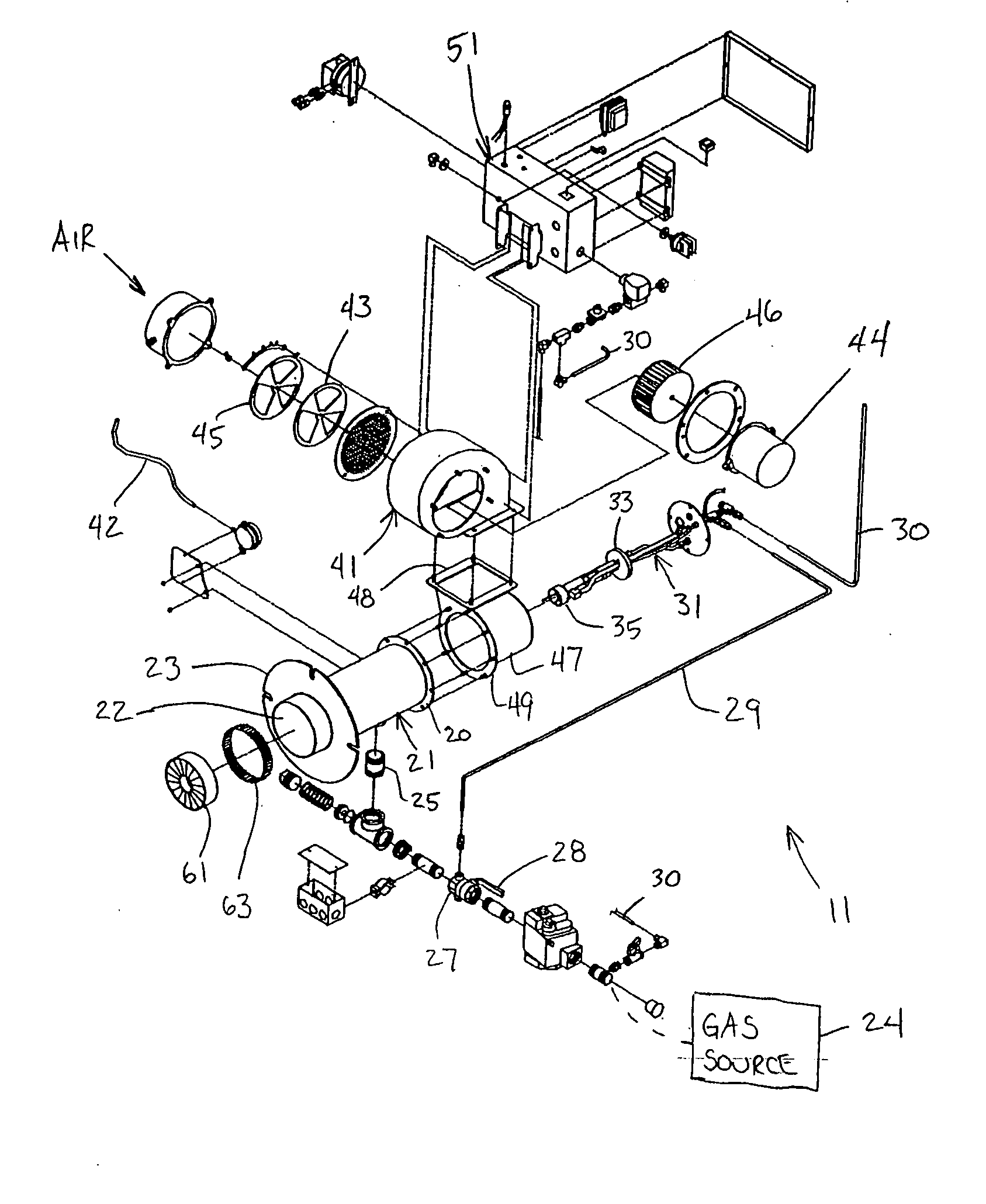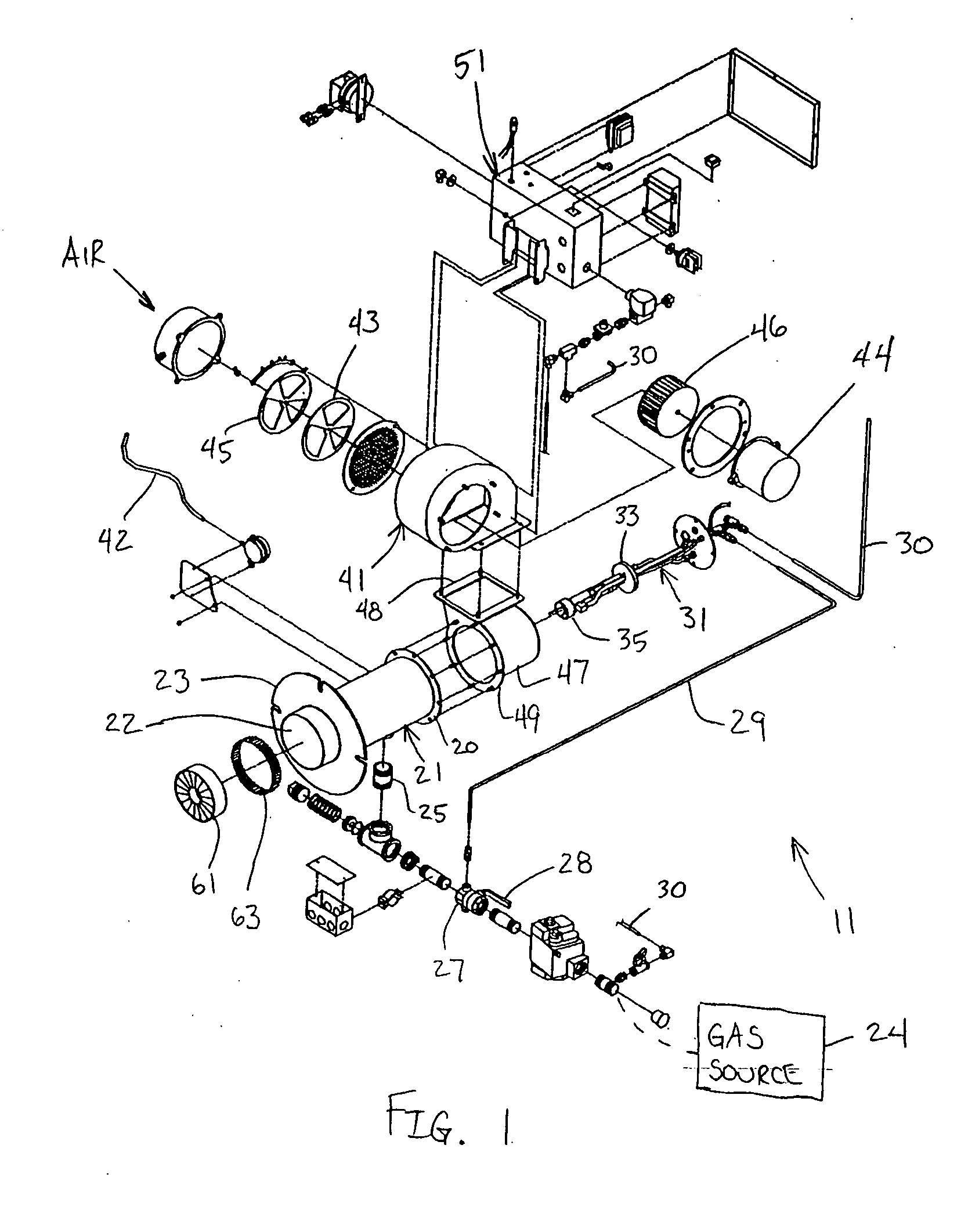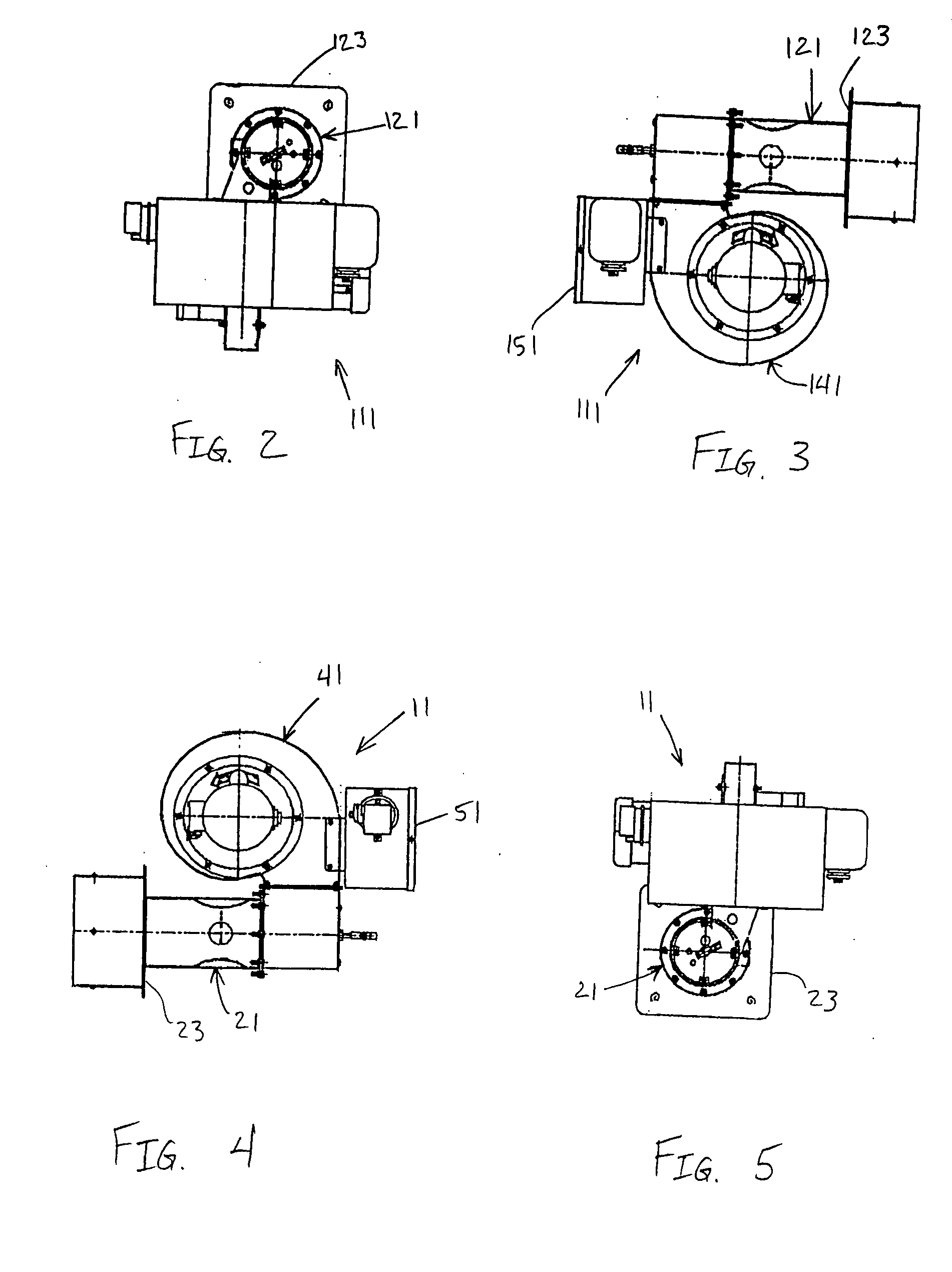Combustion burner assembly having low oxides of nitrogen emission
a burner and combustion technology, applied in the direction of burners, combustion types, pulverizing fuel combustion burners, etc., can solve the problems of reducing the efficiency of combustion burners, affecting the environment, and using perforated screens or sheets, so as to achieve low levels of oxides of nitrogen
- Summary
- Abstract
- Description
- Claims
- Application Information
AI Technical Summary
Benefits of technology
Problems solved by technology
Method used
Image
Examples
Embodiment Construction
[0028] As shown in FIGS. 1-14, a burner assembly 11 according to the present invention reduces the level of oxides of nitrogen emission. A uniform and lean fuel mixture is provided that reduces the combustion flame temperature, thereby resulting in the reduction of oxides of nitrogen (NOX) emission.
[0029] The burner assembly 11 includes a mixing section 21 in which supplied air and fuel are premixed before being combusted in a heat exchanger 71 (FIG. 14). The burner assembly is rigidly coupled to the heat exchanger 71 by flange 23 at a combustion exit 22 of the mixing section 21, thereby positioning the combustion exit 22 of the mixing section within the heat exchanger. Preferably, the air inlet 20 is at a first end of the mixing section 21 that is opposite the fuel mixture (combustion) exit 22 at a second end of the mixing section. Fuel inlet 25 is preferably positioned between the first and second ends 20 and 22 of the mixing section 21, as shown in FIG. 14. Preferably, the mixin...
PUM
 Login to View More
Login to View More Abstract
Description
Claims
Application Information
 Login to View More
Login to View More - R&D
- Intellectual Property
- Life Sciences
- Materials
- Tech Scout
- Unparalleled Data Quality
- Higher Quality Content
- 60% Fewer Hallucinations
Browse by: Latest US Patents, China's latest patents, Technical Efficacy Thesaurus, Application Domain, Technology Topic, Popular Technical Reports.
© 2025 PatSnap. All rights reserved.Legal|Privacy policy|Modern Slavery Act Transparency Statement|Sitemap|About US| Contact US: help@patsnap.com



